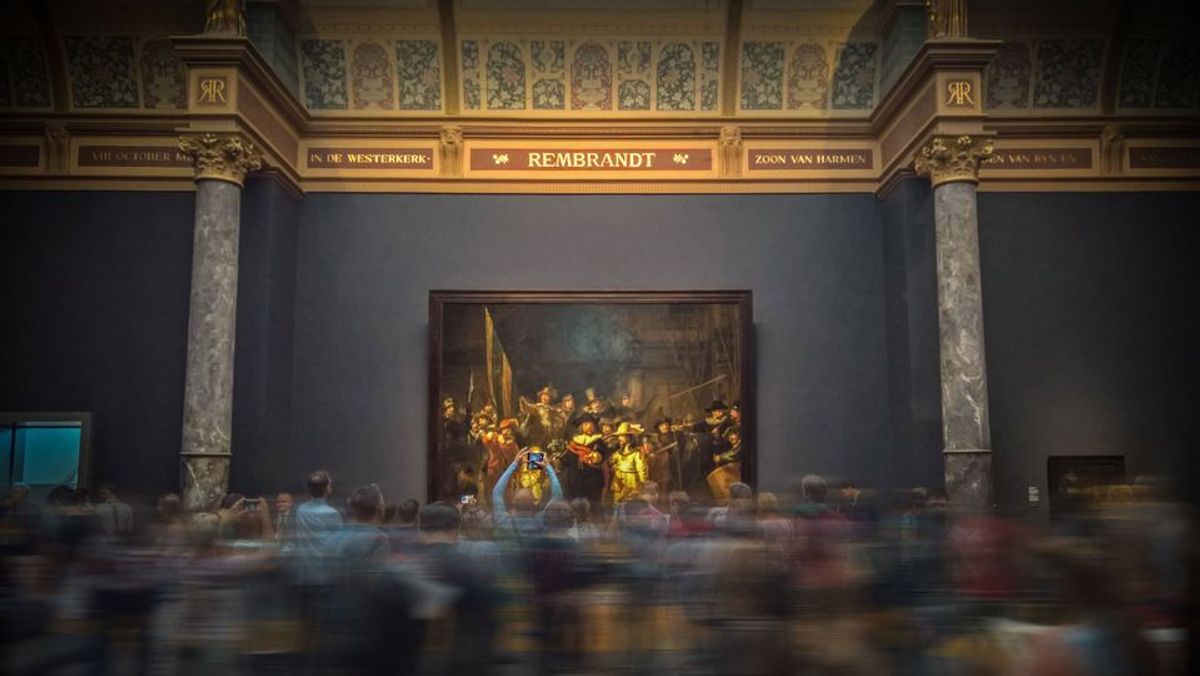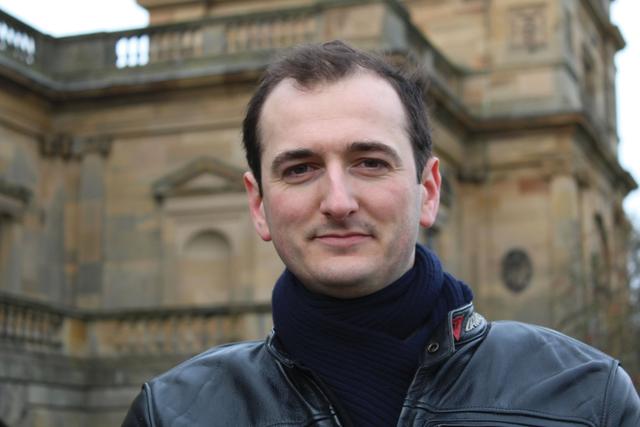I didn’t know that Kassel, in Germany, had such a rich collection of Old Masters. Entire rooms of the Schloss Wilhelmshöhe, perched high above the city, are devoted to the likes of Rembrandt, Rubens and Van Dyck. Perhaps the many “no photography” signs account for the collection being little known. But I must admit to enjoying stumbling across masterpieces that I didn’t already know digitally.
I was in Kassel for a new series of the BBC’s Britain’s Lost Masterpieces, which I present. The museum staff could not have been more welcoming. But we were foiled by an innovative security system. There are no barriers or ropes, but peer too closely at a painting (or, as a TV presenter, wave your arms too enthusiastically at one) and a hidden sensor triggers an alarm. Then, all the gallery lights flash on an off for about a minute. It’s like an Old Master disco.
From Kassel we drove to Amsterdam, to film in the Rijksmuseum. As we crossed effortlessly over the border from Germany into the Netherlands—and having driven initially from Britain—I had one of my occasional moments of Brexit despair; will we be able to so easily work and travel in Europe again? Leading Brexiteers say we need only have faith, and everything will be ok. Which to be honest just makes me cross.
Each time I visit the Rijksmuseum, I’m in awe of how it succeeds in making Old Masters relevant and engaging to new audiences. It is by some distance the most digitally accessible museum in Europe; photography is encouraged, and the museum’s high-resolution images are free to use. But what also impresses is the overall attention to presentational detail, from gallery lighting to easy-to-understand wall labels. Everything is expected to be perfect, and it is. I even noticed a shoe-polishing machine at the staff entrance.
Then to Bruges, the miraculously preserved medieval Flemish market town. I was there to speak at the annual Codart conference, a network of curators of Dutch and Flemish art founded in 1998. Codart is unique in the museum sector—there is no similar grouping for, say, Italian or British curators—and not only provides an environment for curators to meet and discuss their field but, through its own website, acts as a cheerleader for Dutch and Flemish Old Masters. We need more Codarts.
People respond to good, well-told stories about interesting people
The subject of this year’s conference was: “Old Masters, Old Fashioned?” My task was to discuss ways of bringing new audiences to Old Masters and my pitch was simple; to paraphrase Bill Clinton, it’s the stories, stupid. People respond to good, well-told stories about interesting people. But I was surprised at how many curators had lost confidence in Old Masters. I listened with nervousness to plans for entirely thematic hangs and (worse) “trans-historical” displays, in which contemporary art is hung among Old Masters. Such approaches remove storytelling possibilities, with their competing narratives of time and subject matter. And as a curator from Haarlem’s Frans Hals Museum told us, they succeed only in alienating existing audiences, not bringing in new ones. It’s a fact that more people visit Old Master exhibitions than contemporary art exhibitions. But too many museums see contemporary art in the context of record auction prices and believe that this reflects popular taste, rather than a speculative market.
We returned to the UK on the Eurostar. As we disembarked, Bill Cash, the veteran MP and Brexiteer, approached me. I tensed. He generously, and with great charm, told me how much he enjoyed Britain’s Lost Masterpieces, and we parted the best of friends.



